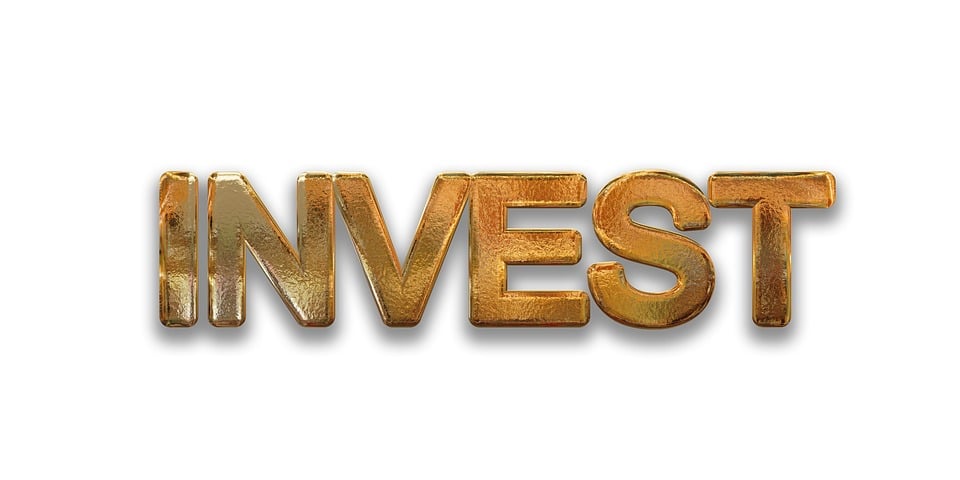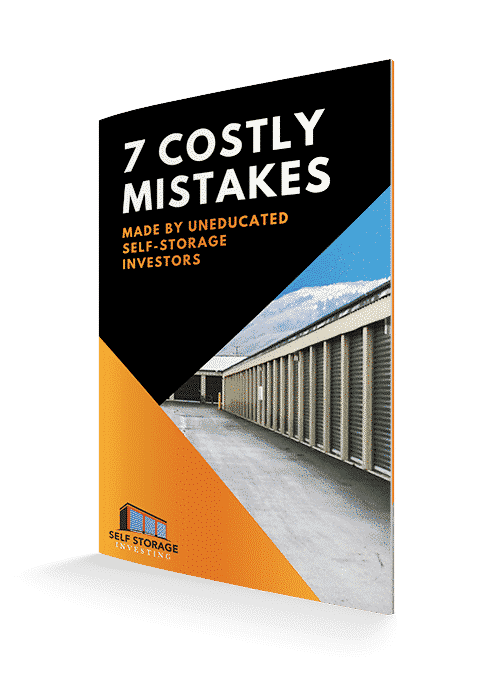Although there are many wealth-building strategies, the best way to grow money is by investing in real estate. In this article, we’re going to explain how wealth creation investments work in general, but our primary focus will be on the real estate market.
What Are Wealth Creation Strategies?
Wealth creation investing requires a lot of planning. If you want to gather a lot of resources and secure your retirement, you need a good strategy. That’s the only way to achieve financial freedom.
We can’t amplify enough how important it is to invest early in your life. The benefits of compound interests are enormous! However, if you haven’t started in your twenties, you can still save money to invest and build wealth. All you need is a good plan, patience, and discipline.
Creating an Investment Strategy
Before you start creating your wealth-building strategy, you need to find a reason you’re investing. Your purpose and your goals will help you stay on the right track. Reminding yourself about priorities will allow you to make good investment decisions and stick with them. Wealth-building is a long-term journey, so you can’t lose sight of your goals in the middle of the road. Once you really understand yourself, you’ll be able to tailor the wealth-building strategy to your needs.
How Many Assets Do You Want?
The first step in creating your wealth-building strategy is deciding on your financial goals. You want to know how much you want to earn so you can know how many assets you want to hold and what amounts of money you should invest. Make sure to set realistic expectations in correlation to your financial options, income streams, and expenses.
You also want to include time frames in your planning. When will you invest, and how often will you check on the state of your investments? If you don’t have a detailed plan, you might over obsess in your portfolio and end up selling your assets to buy new ones when you shouldn’t.

Types of Investments
Investments are the product you purchase with the expectation that they’ll generate profit. Generally speaking, there are 3 types of investments: ownership investments, lending investments, and cash equivalents.
Ownership investments are most profitable, so naturally, they’re the first choice for building wealth. You can own stocks (a portion of a company), precious metals, valuable objects, or other assets. You’re buying assets in the hope that their cash value will increase over time so you can sell them for a profit.
You can also own a business, but entrepreneurship is one of the toughest ways to build wealth. It requires a lot more than money. You need to have a brilliant and lucrative business idea, and you must invest a lot of time to make it happen.
Real estate investments can be seen as something between owning stocks and owning a business. You purchase property to rent out and generate passive income, and you resell it when its value increases. Rental income can be excellent for building wealth, but you have to deal with the hassle of being a landlord. Naturally, you can hire a management company to do this for you, but this will reduce your income streams.
That’s why many people are looking for simpler ways to generate passive income. One of them is self-storage investing. You’ll have little to none business with tenants as everything is automated, and the demand for storage units is high, so your retirement income is almost guaranteed.
Lending investments and cash equivalents are not as much as profitable, although the risks are much lower. Lending money in the form of bonds generates decent interest over time. Bonds are securities in which you lend money to companies or governments for a set period. Once the bond reaches maturity, the issuer returns your money with interest. Use bonds to secure your investment portfolio from riskier investments since they provide secure fixed income. Also, with some bonds, such as munis, you can avoid paying taxes, so they’re good for your bank accounts that aren’t tax-deferred, like regular retirement accounts 401k and IRA.
Savings accounts are also a form of lending investments. You’re basically lending money to the bank for a smaller interest. Since the return on saving account is quite low, this isn’t a strategy for wealth-building. It’s mostly the way people secure their money against inflation.
Cash equivalents or money market accounts function similarly to savings accounts with the difference that you need to leave the money in the bank for a set period without touching it for a higher interest. Your money is liquid, so you can take it if you really need it, but you’ll lose the interest.
Investment Management
When you’re creating a wealth-building strategy, you need to find the combination of the aforementioned investments that’s the most lucrative. Look for the long term, and keep everything in mind, from risks to interest rates.
The best way to reduce your investment risk is by diversifying your portfolio. This means investing in different assets and different sectors. As the saying goes, “Don’t put all your eggs in one basket.” You want to spread your options and increase your chances of success!
Investing in mutual funds is a great way to get a mix of different shares, but there are maintenance fees and additional expenses you should look after. REITs (real estate investment trusts) are funds that are focussed on owning or financing properties, so they provide a great way to hold different asset classes.
Adding real estate assets into your wealth-building strategies can be very profitable. Just make sure to diversify your real estate portfolio, too. You don’t want to put everything in residential buildings just to see the market crash. You want a recession-proof portfolio, so make sure to add properties that perform well in economic downturns, such as self-storage facilities or low-priced rentals.

A Closer Look at Two Wealth-Building Strategies
From other strategies, we want to single out the two best performing ones: stock market and real estate investing, especially self-storage investing.
Stocks of publicly traded companies can be very profitable, but you need to know which company you should invest in. Stocks are very volatile, and their cash value can change overnight. Although you can invest by yourself, consider taking the advice of experienced brokers.
Many people decide to buy shares in a fund instead of buying individual stocks. This reduces the overall risk. The most popular index fund S&P 500 has a historical average return of 10%, not adjusting for inflation. The returns, naturally, depend on the market, economy, geopolitical events, and other factors.
Real estate properties, on the other hand, aren’t as liquid as stocks and require more involvement from the investor’s side. However, they provide a steady cash flow and the possibility of substantial appreciation so you can build your wealth with fewer risks. Note that you can also invest in REITs, which are bought and sold like stocks but provide diverse assets.
Self-Storage Investing
Self-storage might be the best wealth-building strategy for private investors. Self-storage basically provides steady passive income with almost no effort on your part. With residential rental units, you’ll have to deal with tenants almost on a daily basis. On the other hand, investing in storage units, means that you don’t have to communicate with renters. The entire industry is heavily automated – renters pay the units on kiosks, and the locks are secured with technology.
Not only does maintenance of self-storage facilities require minimal effort, but they’re also very cost-efficient. You won’t lose a large portion of your rental income because the units are not used for residential purposes. People just store their stuff, and any damage is minimal. That’s why self-storage facilities rarely lose their value over time like residential buildings do.
The costs of building self-storage facilities are also very low compared to residential properties. The average cost for building a single-story self-storage unit is around $25 to $40 per square foot, not including the price of the land. This heavily depends on the location, but so do the rent prices. The best part is that a prosperous unit can expect its full income within 18-24 months, which is a very short time for a real estate investment.
Self-storage units are currently being built at an exponential rate! You want to get in the game early so you can reap the most benefits. People are always on the move, living here and there throughout the world. They want to have a safe place to hold their belongings, and the self-storage industry is providing exactly this.
Even during tough economic times, self-storage investing is stable. When people are cutting their expenses and downsizing, they often move to smaller apartments and homes but don’t want to give up their priceless possessions. When businesses move from enormous office spaces to smaller ones, where do you think they hold their stuff? That’s right! Storage units provide answers even during recessions. This is one of those rare recession-proof investments that your wealth-building portfolio desperately needs!
What Are the 3 Steps to Building Wealth?
Generally, there are 3 steps to wealth-building: You need to make money, save it, and then invest it. Sound simple? Actually, without a well-defined strategy, you can get caught up in life events and get off track. Securing steady income streams is something we all aim for. However, getting a good job is just the beginning. You need to be dedicated to saving a certain amount of money each month, no matter what happens. Cut your expenses if you have to, but stick with your savings plan.
Even small sums of money can lead to a substantial amount due to the power of compound interest, but you need to save it regularly. Your goal is to invest your active (earned) income stream so you can generate passive income and open the gates of financial freedom.
Once you’re ready to start investing, follow your strategy and build a diverse investment portfolio. As said, the help of a financial professional is recommended if you’re new to investing.

How to Use Real Estate to Build Wealth
Why are we amplifying real estate as one of the best wealth-building strategies? Simply because real estate investing allows you to take advantage of bigger opportunities. When you buy stocks or bonds for 50k, you’ll get securities that have a value of $50,000 (or less, depending on how you purchase them). But when you invest the same amount in real estate, you could get a $200,000 property with a mortgage. Naturally, money from renting the property should cover the mortgage, insurance, taxes, and other expenses. Additionally, you’ll get tax benefits and a portion of the passive income. After selling the property, you might not even have to pay capital gains taxes if you perform a 1031 exchange.
Being a landlord isn’t for everyone since it requires active involvement. However, if you count in the costs for a management company, you can secure a steady retirement income for yourself. Some properties might not even require third-party company management. Self-storage facilities can be managed with only one on-site manager since the entire system is heavily automated.
Real estate investing doesn’t come without any risks. The most often problem for investors is the lack of research and market knowledge. You can’t just casually invest in properties because these assets aren’t easily liquidated. You need to carefully choose your investments. Find an experienced professional that can help you score the best deals and avoid risks.
How Do You Build Wealth with Little Money?
The best way for wealth-building when you have little to no money is by cutting down your living expenses. Remember the 3 steps of building wealth – the second one is saving. Your expenses need to be much lower than your income if you want to start investing and securing your financial freedom. The more you save, the more wealth you’ll be able to accumulate.
If you live way beyond your means and rely on your credit cards, you need to stop right now. Pay that high-interest debt that’s eating your income and start saving. Fortunately, there are a lot of options to cut your spending you might not even consider. You could:
- Drive used vehicles instead of wasting money on car payments with huge interest rates.
- Downsize – you can save on housing so much if you find a more affordable apartment to rent out or sell your home for a smaller one. Moving in with another person will also help you save on housing costs.
- Don’t buy the stuff you don’t need. When you think about it, most people buy new technology, clothes, and appliances simply because it’s normal to do so. Do you really need a new phone if your old one is working perfectly fine? Ask yourself this question for every purchase and always sleep on a decision.
- Control your credit cards. You need a positive payment history to build up your credit score, but use them only for large purchases you can afford to pay on time.
- Go shopping with a precise list. This will help you avoid buying more groceries than you need. On a side note, don’t go to the store hungry so you don’t make impulsive purchases. You can save more than 50% of your grocery money if you don’t go to the store hungry.
- Cancel memberships and subscriptions you don’t use. Do you really go to the gym, or is that just wishful thinking? The same goes for magazines or streaming services you don’t read or watch often.
- Get health and life insurance. People lose a lot of money in case of emergencies and accidents, so you want to prevent that from happening.
- Set aside money as soon as you receive your paycheck. Pretend that money doesn’t exist and budget your expenses without it.
These are just some things you can do to cut your spending, save some money, and get started with your investments. Always remember to look for the long term. What seems hard or impossible now will help you build wealth in the future.

How Can I Build My Wealth in My Forties?
As said, it’s very important to implement your wealth-building strategies early in your life. However, there are several things you can do in your forties to secure your retirement. Look at your forties as a turning point to take control of your finances. By now, you need to have good health and life insurance that can help you and your family with expenses, and it’s a good idea to also establish an emergency fund to avoid credit card debt.
Invest outside of your retirement account since there are limits to how much you can save in tax-advantaged accounts. Once you maxed out those, open other fronts. The more money for investments and wealth-building strategies you can set aside, the higher rewards you can reap. For building wealth, it’s crucial to establish other sources of income. As said, you want to slowly transition to passive income so you can secure your retirement.
To create wealth in your forties, all you need is to save money, pay your debts, and create an amazing diverse investment portfolio. Remember to add highly profitable real estate assets in there, too! If you join our community of real estate investors, we’ll show you exactly how you can build wealth by using the power of self-storage investing. Contact us now so we can lead you towards your financial freedom.






